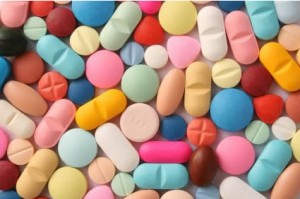 The NYT looks at doctors who are duped into prescribing painkillers or certain meds by patients Occupational Hazard: Playing the Fool
The NYT looks at doctors who are duped into prescribing painkillers or certain meds by patients Occupational Hazard: Playing the Fool
I suggest that we apply a similar principle to the prescribing of narcotic painkillers and anti-anxiety drugs. Let’s assume that it’s impossible not to be fooled at least some of the time — that when assessing patients’ sincerity, we should expect a certain rate of false positives.
Thus, when confronting patients who demand Xanax or morphine, doctors should worry less about defending their self-esteem and their lie-detection skills (after all, the most talented sociopaths are the ones most skilled at convincing others of their honesty) and more about what treatment is best for the patient.
Source: The New York Times

-
iStockphoto
How much do you drink? Join the BBC’s quest to find out.
Doctors should ask patients about their drinking habits as a matter of routine, say health advisers. But do you really know the answer?
It was so much easier in the old days. A small glass of wine. Half a pint of lager. Or a small whisky.They all contained roughly one unit of alcohol, which is 10ml of pure alcohol. At least, that was the general rule of thumb, however erroneous it was. link to continue reading
 Your drinking diary for the week ahead
Your drinking diary for the week ahead
Source: BBC
 When it comes to pain, the two competing schools of thought are that it’s either “all in your head” or “all in your body”. A new study led by University of Oxford researchers indicates that, instead, pain is an amalgam of the two.
When it comes to pain, the two competing schools of thought are that it’s either “all in your head” or “all in your body”. A new study led by University of Oxford researchers indicates that, instead, pain is an amalgam of the two.
Depression and pain often co-occur, but the underlying mechanistic reasons for this have largely been unknown. To examine the interaction between depression and pain, Dr. Chantal Berna and colleagues used brain imaging to see how healthy volunteers responded to pain while feeling low. [continue reading…]
 Enrichment classes, after-school activities, tutoring, not to mention the gentle prodding of parents — all may count in giving a child that extra academic edge. But parents still puzzle over what the right mix is to make their children excel in school.
Enrichment classes, after-school activities, tutoring, not to mention the gentle prodding of parents — all may count in giving a child that extra academic edge. But parents still puzzle over what the right mix is to make their children excel in school.
It turns out that the missing ingredient could be the friends a child keeps, specifically their in-school friends, the ones who sweat the same tests and homework and complain about the same teachers, rather than those they may make outside of school.
[continue reading…]
 The NYT looks at doctors who are duped into prescribing painkillers or certain meds by patients Occupational Hazard: Playing the Fool
The NYT looks at doctors who are duped into prescribing painkillers or certain meds by patients Occupational Hazard: Playing the Fool


